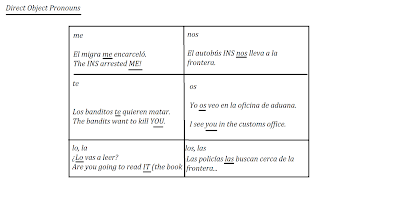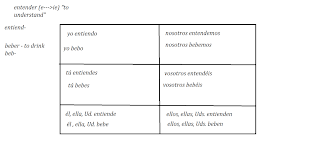Posts
Showing posts from 2010
Michael Vick quiere conseguir un perrito
- Get link
- X
- Other Apps
CA Hospital Sued over Recent English-Only Flap
- Get link
- X
- Other Apps
Vocabulario - Las Cosas en la Recámara (Things in the Bedroom)
- Get link
- X
- Other Apps
Ponerle a algo - Using the Verb Poner in Interesting Ways
- Get link
- X
- Other Apps
Practicing Basic Sentences with Estar and Ser
- Get link
- X
- Other Apps
The Auxiliary Verb Haber in its Transitive Form
- Get link
- X
- Other Apps
Other Common Irregular Verbs - Saber and Caber
- Get link
- X
- Other Apps
Common Irregular Verbs - The "(C-ZC)" Change
- Get link
- X
- Other Apps
Common Irregular Verbs- The "(G)" Change
- Get link
- X
- Other Apps
Demonstrative Adjectives and their Pronouns
- Get link
- X
- Other Apps
Vocabulario - La Ropa (Clothes and Clothing)
- Get link
- X
- Other Apps
Adding Diacritical Marks (Accents and Other Marks) to a Document
- Get link
- X
- Other Apps
Commands in the Nosotros Form (With Pronouns)
- Get link
- X
- Other Apps
Commands in the Nosotros Form (Without Pronouns)
- Get link
- X
- Other Apps



